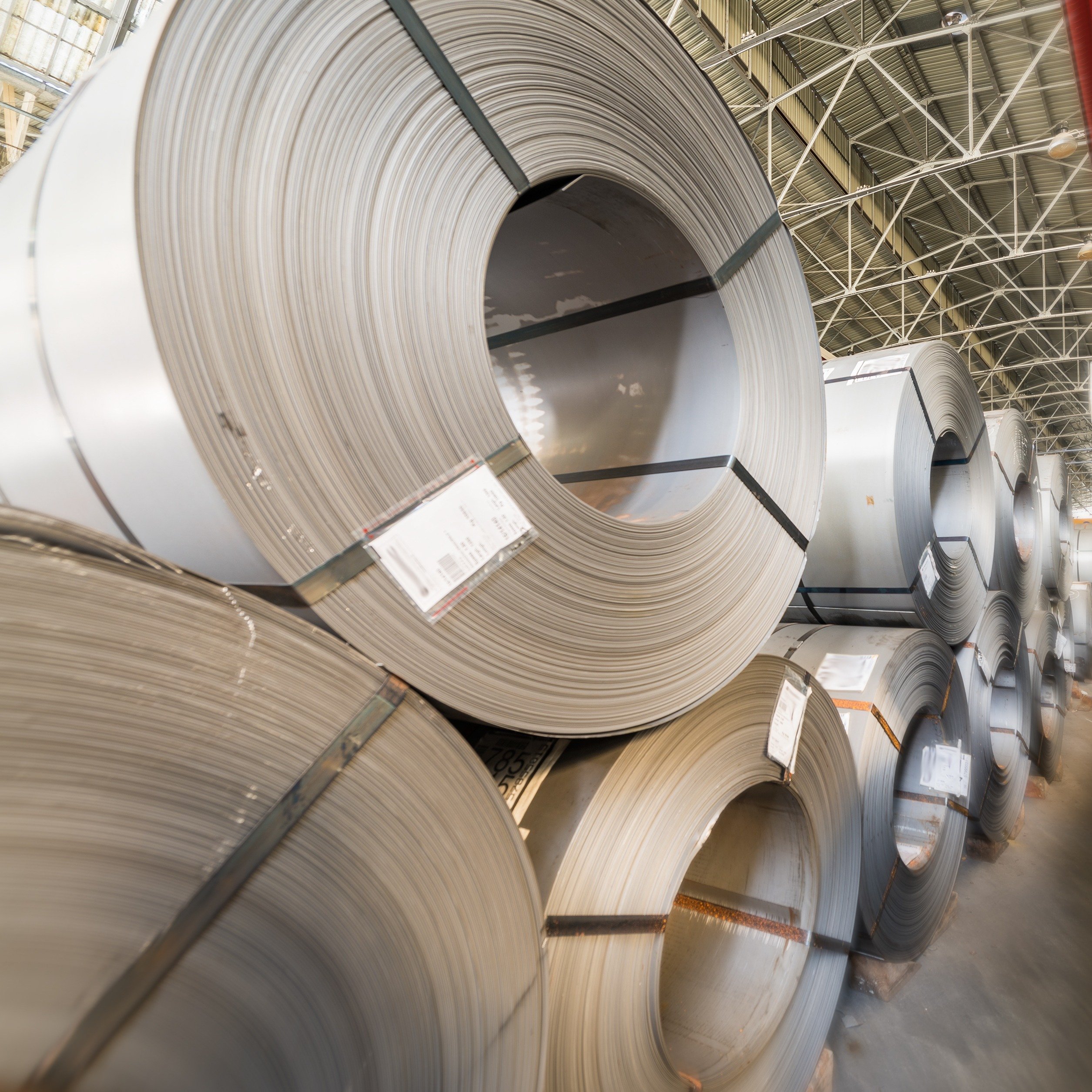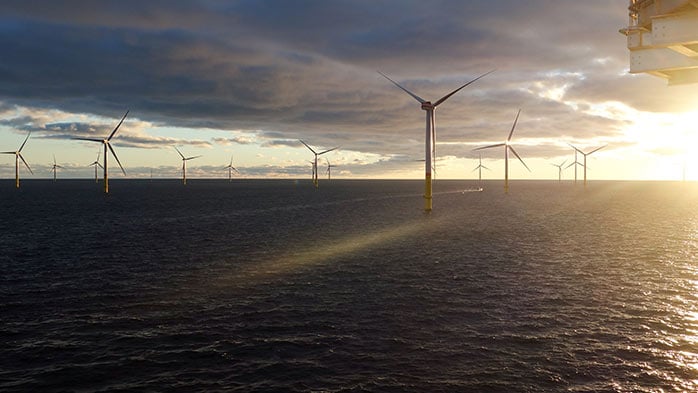The costs and challenges of absorbing renewables (RE) onto a grid start rising significantly once RE penetration lifts above 10–15%. Across the EU, the costs for RE integration imply the need to invest at least €1.3 tn in the power network up to 2030, and even more going forward to allow higher levels of RE penetration while containing rising integration costs.
Germany, for example, has a high penetration of RE on its grid – a success story for decarbonisation – but the costs of integrating this power onto the grid are now at ~€95 /MWhRE (note: MWhRE is defined as grid power from renewables only), higher than the underlying cost of the power itself.
This result has implications for industrial operations that are looking to decarbonise through the installation of captive renewable energy, and it is important to consider the cost of decarbonisation. Captive plants and microgrids have fewer options to optimise costs than a region-wide grid and we expect costs of firm, 24/7 power from captive systems will always be higher than can be achieved by the grid.
If you need advice on decarbonisation options for your strategy, talk to us, our analysis is unbiased, fact-based, expert and rigorous; we’re not swayed by hype or blind optimism.
Integrating renewables onto the grid is increasingly challenging
The recent report by the IEA – Integrating Solar and Wind: Global experience and emerging challenges – sets out the status of national efforts to integrate increasing levels of solar and wind on to grids. The report goes into detail on the approaches adopted and concludes that “realising the full potential of solar and wind requires proactive integration strategies” and that “a lack of strategies would jeopardise progress on renewables rollout and emissions reductions”. While the report sets out the “well known and tested measures for integrating renewables”, what it does not do is set out the costs of doing so.
In this Insight, we use a top-down approach to understand what those costs are.
Grid congestion and balancing charges rise with RE penetration
Absorbing RE onto a grid has costs that rise as RE penetration increases, but there have been few attempts to quantify these costs and often they are ignored, i.e. when it is quoted that “renewable energy is now cheaper than fossil power”. This statement ignores the costs associated with absorbing the RE onto a grid to provide firm power, which are material.
To quantify these costs, we look at the payments made by current national grid operators – in the form of congestion and balancing charges – and use this information to estimate the investment that a grid operator should be prepared to make to negate them, while rendering the grid able to accept higher levels of RE.
Below, we set out the relationship between grid congestion and balancing costs and RE output for four grids (e.g. UK, Germany, USA (total) and California) to demonstrate the relationship between RE penetration and these costs. RE output data is taken from the latest edition of CRU’s Power Transition Service.
In all cases there is a close relationship between the congestion and balancing charges that need to be paid (y-axis) and the absolute level of RE on grid (x-axis).
These charges – quantified by the gradient of the best fit lines – arise because modern transmission networks are poorly configured to accept RE. For example, from the above charts, the cost to absorb RE output onto the UK grid equates to ~£64 /MWhRE, over and above the cost of the underlying power itself.
Transmission networks have been built over time to optimise the movement of power from large generating plants (n.b. fossil-based, nuclear and hydro) to large centres of demand, but not to move power from multiple distributed RE plants. Thus, as RE penetration on a grid lifts, this results in constraints and inefficiencies that manifest in congestion and balancing charges.
The payments shown reflect the costs to curtail power plants (i.e. both fossil and RE) at short notice to manage congestion, payments to fossil plants to manage capacity availability and payments for balancing services. The need for each of these increases with RE penetration when the transmission network does not have enough investment.
Payments could be eliminated by investing in a more flexible grid, as well as storage capacity, which themselves would incur costs. This is a cost that will need to be borne in some way regardless of the approach taken. Indeed, it is considered that the current approach of congestion and balancing payments is almost certainly the lowest cost option for dealing with variable RE, certainly while RE penetration is low.
However, it is also an approach that puts an upper limit on RE penetration, because either there will be a physical upper limit to the amount of RE an underinvested grid can accept; or the costs of doing so will escalate. As such, this approach is an obstacle to full decarbonisation of the power grid and investment must be considered.
Converting the above line gradients into US Dollars, the following chart shows the cost of congestion and balancing – on a $/MWhRE – versus the level of RE penetration on the grids studied. It is clear the costs of absorbing renewables onto a grid rise as penetration increases.
Analysis of the individual country data shows that, below ~10–15% RE on a grid added congestion and balancing costs are negligible, but they begin to rise once the 10–15% threshold is crossed, rising to ~$125 /MWhRE at 50% penetration. Thus, although we expect RE costs themselves to fall with higher penetration and experience curve effects, the costs of absorbing this power will continue to rise.
The chart also shows the impact of these RE integration costs once they are spread over total power generation. At low levels of RE penetration (i.e. below 25%) – where many countries today sit – the impact on costs when spread out across total generation is quite low and it is therefore easily accepted and absorbed by consumers, but these costs rise quickly above this point and become more obvious.
While we believe congestion and balancing costs as currently structured (i.e. focused on curtailment and fossil plant flexibility) are at the low end of what is needed to properly absorb RE on to a grid, we can use them to determine the minimum expected investment a grid operator should be willing to make to at least offset them, while increasing the flexibility of the grid.
For the EU, the forecast of a 44% RE penetration rate in 2030 (taken from CRU’s Power Transition Service) gives an expected constraint cost of ~$110 /MWhRE (i.e. ~€100 /MWh). Coupled with a forecast total RE output of ~1,523 TWh in 2030, this gives an expected total constraint cost of ~€155 bn/y. Assuming infrastructure investments have a 40-year lifespan, an annual operating cost of 5% of the initial capex, as well as a real WACC of 5.0% and tax rate of 20% apply, this suggests EU network operators would need – or should be willing – to invest a minimum of ~€1,300 bn to overcome expected constraint costs in 2030.
Of this amount, ~€700 bn would need to be spent on storage – most likely battery energy storage systems (n.b. see CRU’s Energy Storage Technology and Costs service), assuming storage is installed to deal with daily variability; and ~€600 bn would need to be spent on the transmission network itself to eliminate constraints and improve flexibility. Our forecast for transmission network expansion globally is set out in the latest edition of CRU’s Power Transition Service.
Assuming the relationship shown holds at very high levels of RE, we expect the minimum total investment across the EU would need to be closer to €7.5 tn out to 2050, of which ~33% would be for storage applications and 67% for enhancing the transmission network.
The above analysis has implications for power costs from a grid that is RE-heavy. However, the implications for captive power systems may be greater. The power grid has many more options for optimisation across a large network, whereas captive power systems, or microgrids, have fewer that will almost certainly result in higher costs.
If you are considering options for decarbonisation of your power supply, contact us and we’ll be happy to talk about our views on the development of the power system and implications for captive supply. CRU’s Sustainability and Emissions Service provides a one-stop shop for understanding commodity emissions, policy development and carbon pricing, where you can get credible and realistic views on green technologies.

















